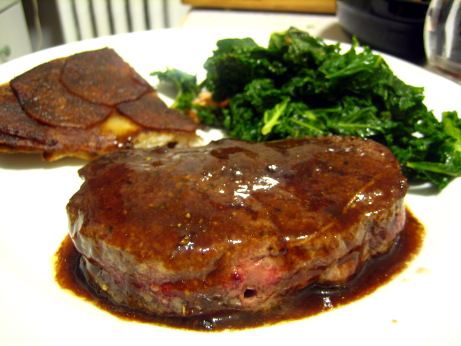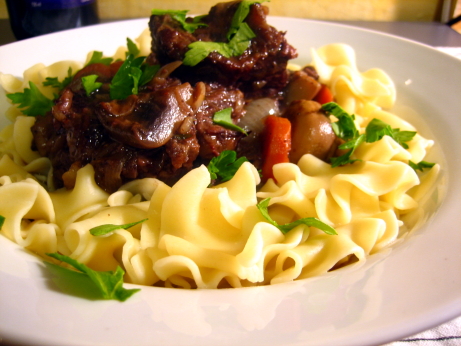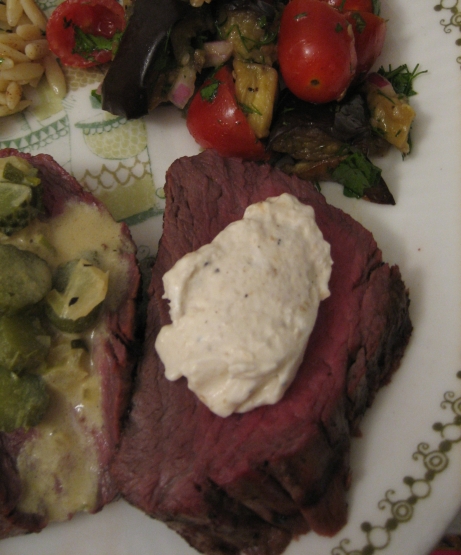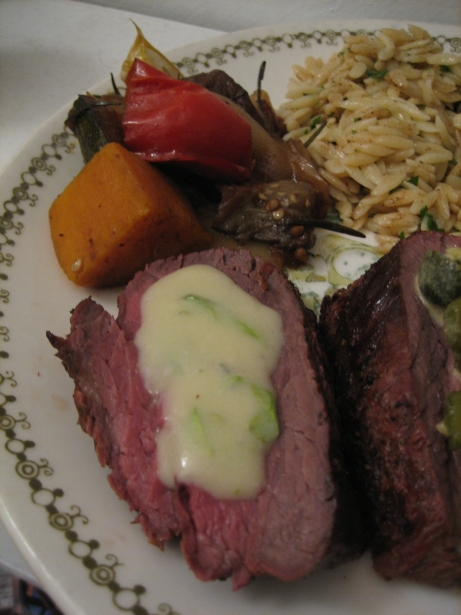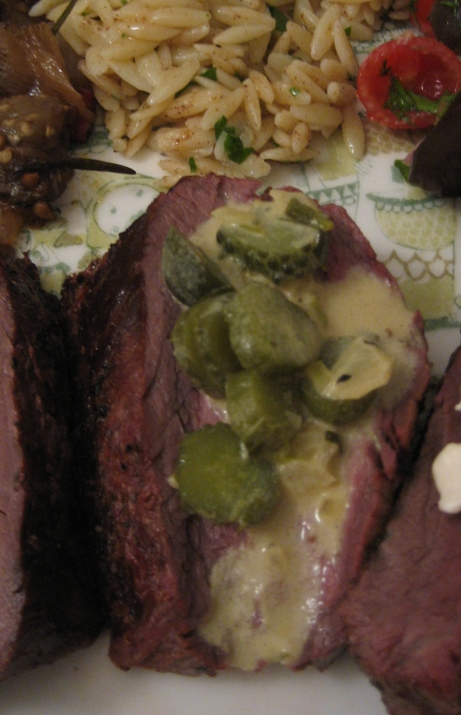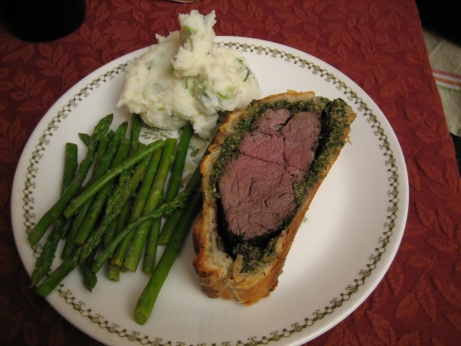Here’s the recipe for the Merlot sauce part of this dish,
This is the second time I’ve made this dish. The first was almost two years ago, when I made it for my dining companion’s birthday dinner. Part of her birthday present was that the steak would be just for her, not for The Project too. That meant I could just cook and serve without the awkward photo session in the kitchen that dishes for The Project require, and I didn’t have to be taking mental notes for a future blog post (but of course I couldn’t help myself). That first time this steak was absolutely fantastic, and I was looking forward to making it again to count it towards The Project.
In this dish filet-mignon is browned in a skillet, then finished in the oven, and served topped with a red wine sauce. The Merlot sauce starts by making a caramel, then dissolving vinegar in the boiling sugar. In another pan onions are softened in butter, and wine, veal stock or demi glace, are added and simmered. The mixture is seasoned, and the solids are strained out. The liquid is added to the caramel, and heated until it’s dissolved. The steaks are served drizzled with the sauce.
The Good: It’s filet mignon with a buttery wine and veal demi-glace sauce, it’s fantastic, if you have any love in your heart for red meat, you will like this dish. The caramel is the surprising part of the sauce, adding sweetness, but also a depth which compliments the browned meat. Filet mignon is all about the so-tender-it-shouldn’t-be-possible texture, and a rich sauce really enhances that. Since it’s a lean cut of meat, the buttery sauce doesn’t put it over the top. Demi-glace is a wonderful wonderful thing, everything it touches just gets better, enhancing flavours, smoothing textures, and bringing the whole sauce together.
The Bad: While the dish was delicious, the technique could have been improved. The steaks are seared in the pan, then roasted to finish cooking through. This builds up a good deal of delicious, wonderful, splendid, magical fond on the bottom of the pan. These browned bits are usually deglazed and used as part of a pan sauce, but this recipe commits the nearly unforgivable sin of just throwing all that goodness out. It also doesn’t ask for any juices that run from the steaks as they rest to be poured into the sauce. That’s just silly. By skipping these steps the sauce can be completely made in advance, which is convenient, but you end up throwing away what could have been the most flavorful part of the dish.
I made a mistake with these steaks and trusted my meat thermometer over my eyes and finger test. I was paranoid about over cooking the steaks (filet mignon overcooks quickly), so I took them out sooner than I should and counted on carryover to finish the job. I radically miscalculated and ended up serving them quite rare. I take my steak rare, and it was a little underdone for me, my dining companion prefers the medium side of medium rare, and it was just not going to happen for her. We were already sitting, and she didn’t want to wait to put it back in the oven, so she nuked it instead. A little part of me dies every time that happens, but it’s a good incentive to get the steaks right the first time.
The Verdict: These were delicious steaks, no question, I’d recommend them to anyone. I think there are a few tweaks that should be made, and it’s certainly not an inexpensive way to do dinner, but if you’re looking for an impressive but not overwhelming dish for a special occasion this is a pretty darn good way to go. The final taste is certainly 5 mushroom worthy, but the travesty of the wasted fond means that I can’t give it full marks.
